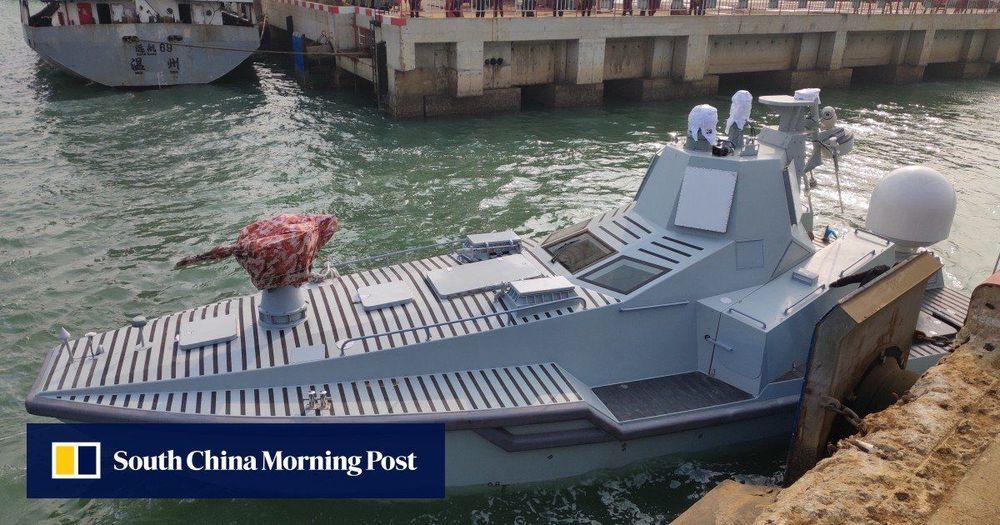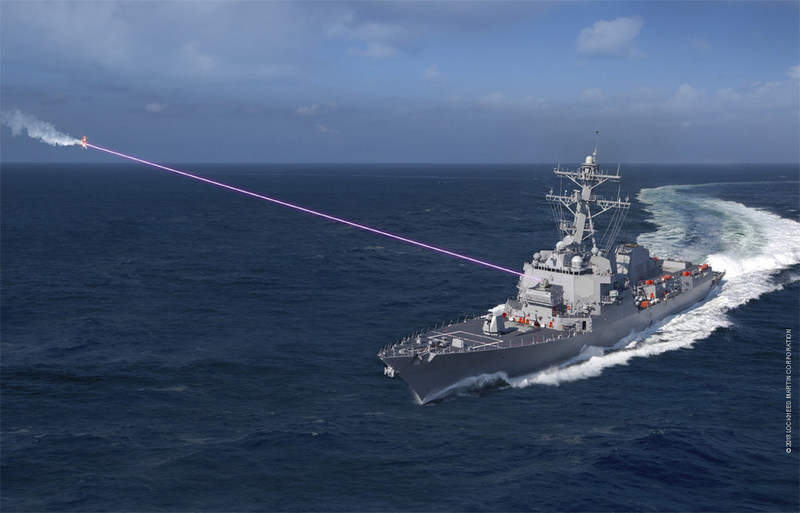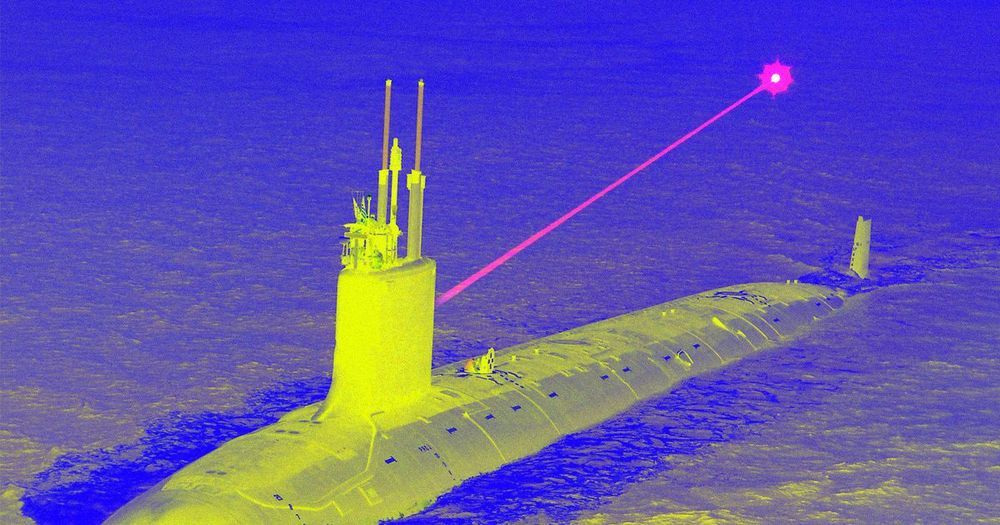Buckle up, Buttercup.
The robotics arms race has been in progress awhile.
Unmanned surface vessel is said to be world’s first with multiple roles – anti-submarine, air defence and surface combat – and powerful weaponry.


U.S. Military Soldiers conduct training on the Common Remotely Operated Weapon Station (CROWS).
CROWS is a stabilized mount that contains a sensor suite and fire control software, allowing on-the-move target acquisition and first-burst target engagement. CROWS also features programmable target reference points for multiple locations, programmable sector surveillance scanning, automatic target ballistic lead, automatic target tracking, and programmable no-fire zones.
Future enhancements include integration of other weapons, escalation-of-force systems, sniper detection, integrated 360-degree situational awareness, increased weapon elevation and commander’s display.
CROWS allows the warfighter to remotely engage targets with precision fire while on the move or stationary to the maximum effective range of the weapon. Capable of target engagement under day and night conditions, the CROWS sensor suite includes a daytime video camera, thermal camera and laser rangefinder. CROWS is designed to mount on any tactical vehicle and supports the MK19 Grenade Machine Gun, M2 .50 Caliber Machine Gun, M240B Machine Gun and M249 Squad Automatic Weapon. (Source: http://asc.army.mil/web/portfolio-item/common-remotely-opera…ion-crows/)
AiirSource Military covers events and missions from the United States Armed Forces. Visit our channel for more military videos:
https://www.youtube.com/AiirSource
Subscribe and turn on the notification bell to stay updated:
Pew pew :3.
The successful test of the powerful laser is a major step forward for the Navy’s directed energy weapons ambitions.

The Marine Corps has officially begun procurement of the Army’s Modular Handgun System to replace its existing pistol arsenal, the service announced on Tuesday.


“I do believe there’s great potential to bring in artificial intelligence to provide early warning of future problems” such as disease outbreaks, Air Force Lt. Gen. John N.T. “Jack” Shanahan, director of the Pentagon’s Joint Artificial Intelligence Center, said in an interview.
Artificial intelligence could spot and track earlier outbreaks of disease around the world, the Pentagon’s AI chief says as he retires from service.

The US Navy has installed its first Optical Dazzling Interdictor, Navy (ODIN), a laser weapon designed to counter unmanned aerial systems (UAS).
The first ODIN laser system was installed on the Arleigh Burke-class guided-missile destroyer USS Dewey during a recent dry-docking.
Unlike hard-kill laser systems already deployed by the US Navy on vessels, ODIN uses a dazzling laser to confuse systems sensors and cameras or, in manned systems, potentially cause glare in a pilot’s vision.

The U.S. Army is working on a new artillery shell capable of locating enemy targets, including moving tanks and armored vehicles. The shell, called Cannon-Delivered Area Effects Munition (C-DAEM), is designed to replace older weapons that leave behind unexploded cluster bomblets on the battlefield that might pose a threat to civilians. The shell is designed to hit targets even in situations where GPS is jammed and friendly forces are not entirely sure where the enemy is.

But there’s just one problem, according to the magazine: Laser weapons basically don’t work underwater, where laser light scatters and gets absorbed almost immediately.
Top Secret
While public documents reveal certain details about the designs the Navy has been testing since at least 2011, the Navy has remained tight-lipped about the execution or purpose of such a system, PopMech reports. One theory, according to the magazine, is that the Navy plans to integrate the lasers into the submarines’ periscopes and use them as surface weapons.